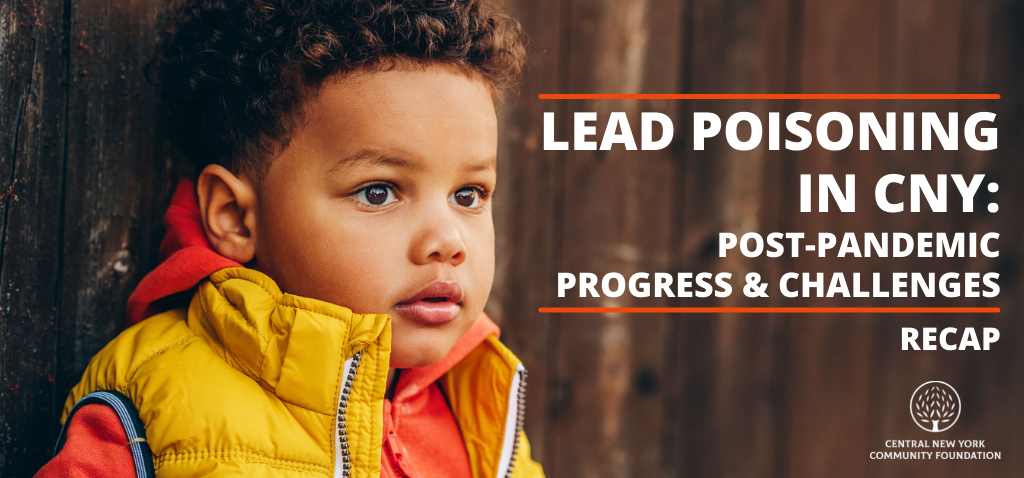
During the onset of the COVID-19 pandemic, the arts and culture sector was among the hardest-hit. As residents remained shuttered in their homes, movie theaters, actors, arts organizations and independent artists struggled to sustain themselves — unable to share their talents. With support from the CNY Arts COVID-19 Impact Fund, emergency assistance provided them with a critical lifeline when they needed it most.
While the arts is commonly thought of as a “niche,” and small industry, the Arts & Culture Impact study in 2019 found that “greater Syracuse’s arts and culture industry generates more than $148 million in economic activity, supports nearly 6,000 full time jobs, generates $125 million in household income and delivers over $21 million in local and state government revenue,” while providing cultural and artistic talents that bring life to the Central New York community.

The arts and cultural sector is composed of myriad industries such as film, advertising, and digital and visual arts, as well as specific individual occupations like performers, musicians, architects, graphic designers, and curators. In addition to its direct contributions to the economy, the arts and culture sector supports and is supported by other professions, such as nonprofit administrators, promoters, accounting, and finance, further magnifying its economic footprint.
“At CNY Arts, we believe that a healthy arts industry is essential to the quality of life and community in Central New York,” said Steve Butler, executive director of CNY Arts. “The industry has been hit much harder than expected by the coronavirus pandemic and its fallout.”
Despite its importance, the arts in Onondaga County experienced a sharp decline in employment even before the pandemic. In 2018, total arts employment numbers in Syracuse dropped from 3,624 to 1,823. The decline not only hurt the sector, but exacerbated Central New York’s gender employment gap in the arts, with only 716 women in the industry in 2018. Since 2009, women have not come close to reaching equal employment numbers compared to their male counterparts – the closest they came was in 2012, when the gap was composed of only 44 people. However, 2019 data implies that women’s arts employment has begun to rise, with 745 women.
As the pandemic continued to disrupt all aspects of our lives, it became apparent that the arts was an area that needed immediate attention. Without patrons visiting museums, productions, shows and exhibits, independent and organized artists struggled to make ends meet. For live arts performers, the closing of venues presented an acute barrier to employment. According to CNY Arts, it is estimated that independent artists lost over $12,000, while organizations lost over $200,000.
CNY Arts realized the need to support local arts, and the community foundation partnered with them to carry out that vision. In August of last year, they had the opportunity to build a campaign fund with CNY Arts designed to support arts organizations in Central New York impacted by the pandemic: the CNY Arts COVID-19 Impact Fund. Specifically, this fund supports artists and nonprofit arts organizations in three categories: restart, reopening, and resiliency.
All contributions made to the CNY Arts COVID-19 Impact Fund were matched dollar-for-dollar, up to $175,000, by the Community Foundation, The Dorothy and Marshall M. Reisman Foundation and the John Ben Snow Foundation. As of Labor Day, CNY Arts reached its $1 million goal for this fund.

“Donations to the CNY Arts COVID-19 Impact Fund helped provide resiliency grants to artists and arts, culture, and heritage organizations in the seven county CNY Arts region,” said Butler. “Funding has been critical to these arts and cultural providers as they work to restart, reopen, and serve our communities as we heal and rebuild.”
Grants were allocated to the CNY Jazz Arts Foundation, the Erie Canal Museum, the Everson Museum of Arts of Syracuse and Onondaga County, Musical Associates of Central New York, Inc., Red House Arts Center, the SU Theater Corporation, among other talented, independent artists and organizations. Due to the slow process of reopening, CNY Arts will keep issuing grants through 2022.
“CNY Arts is committed to ensuring that our arts, culture, and heritage sector will survive and thrive and the Central New York Community Foundation is proud to be a resource to them in this work,” said Peter Dunn, President and CEO of the Central New York Community Foundation.


Recent Comments